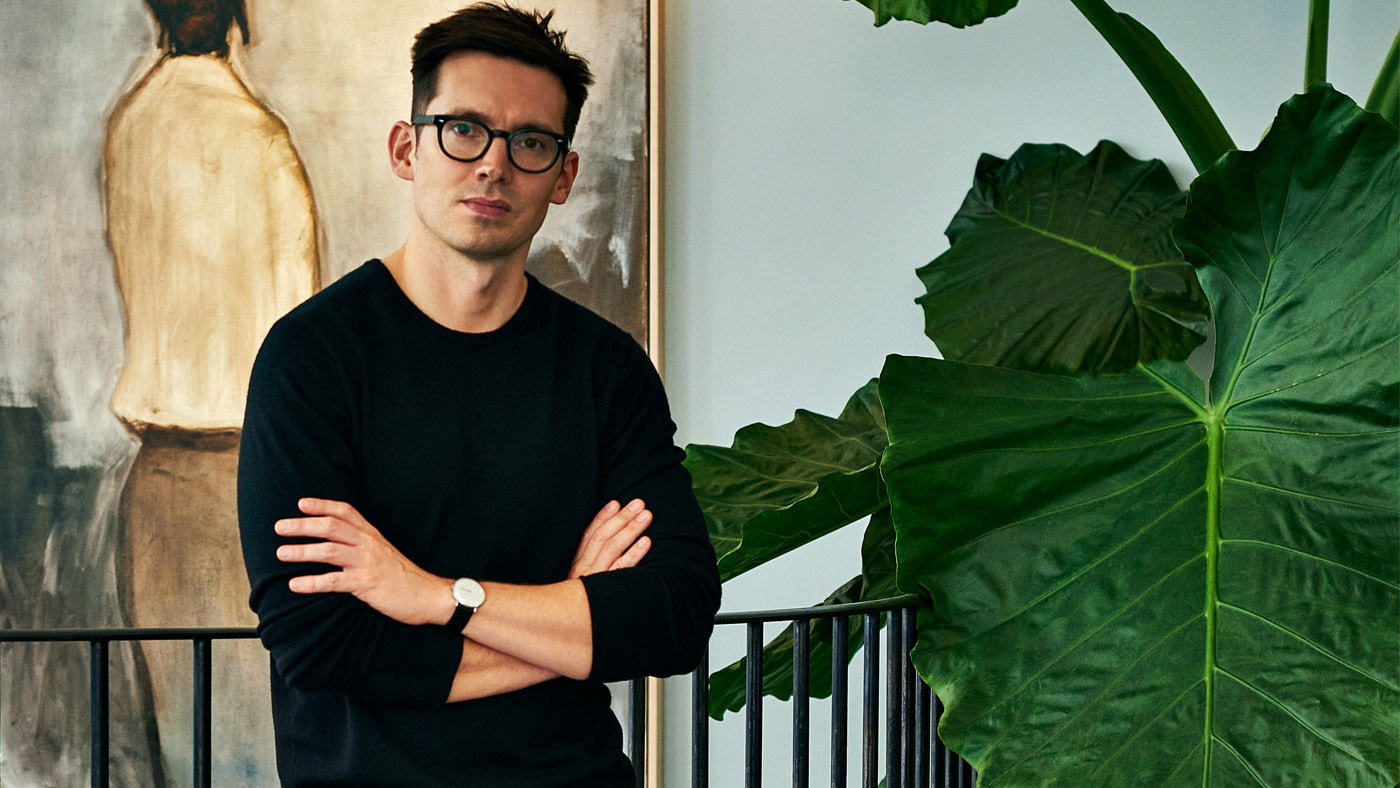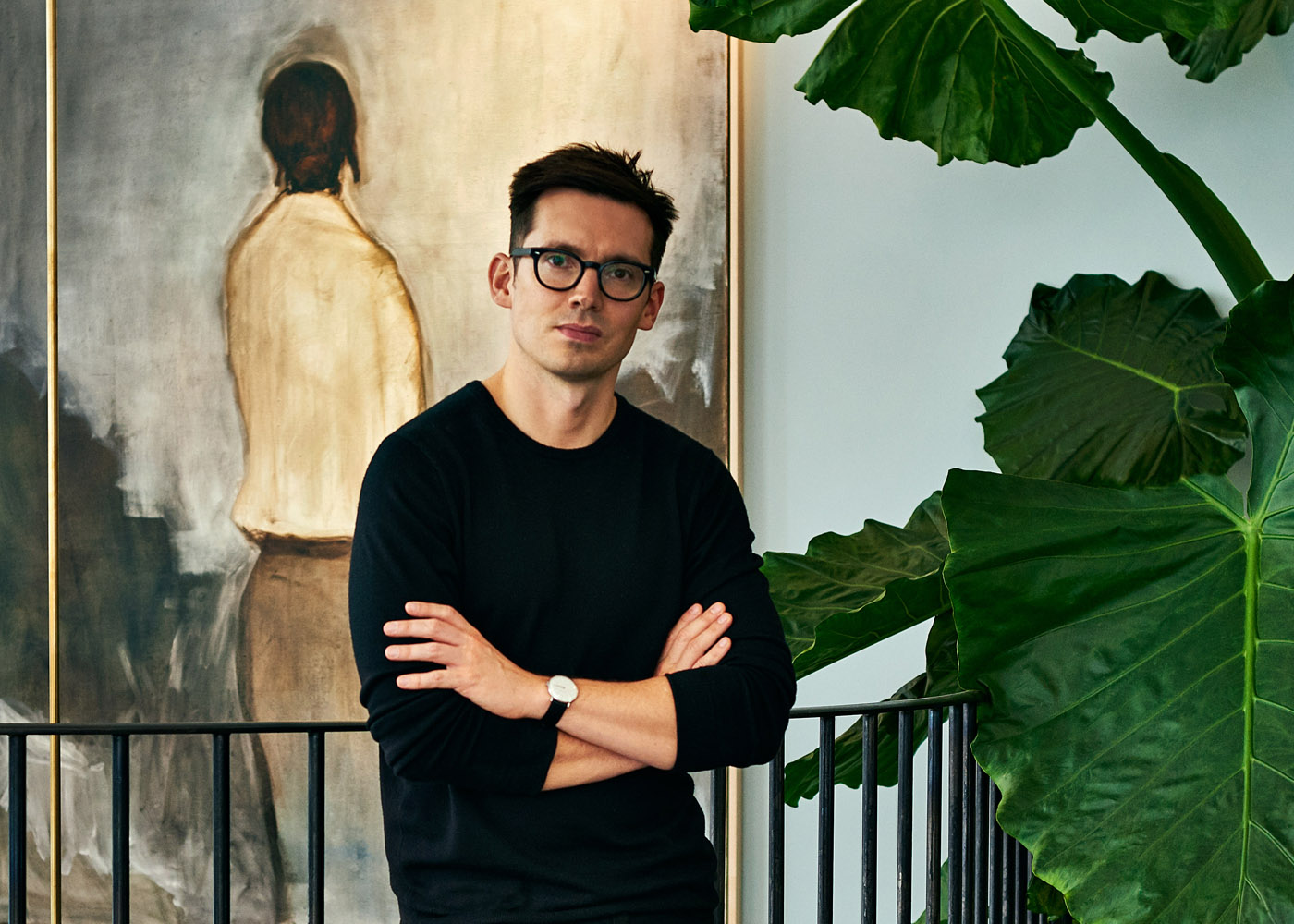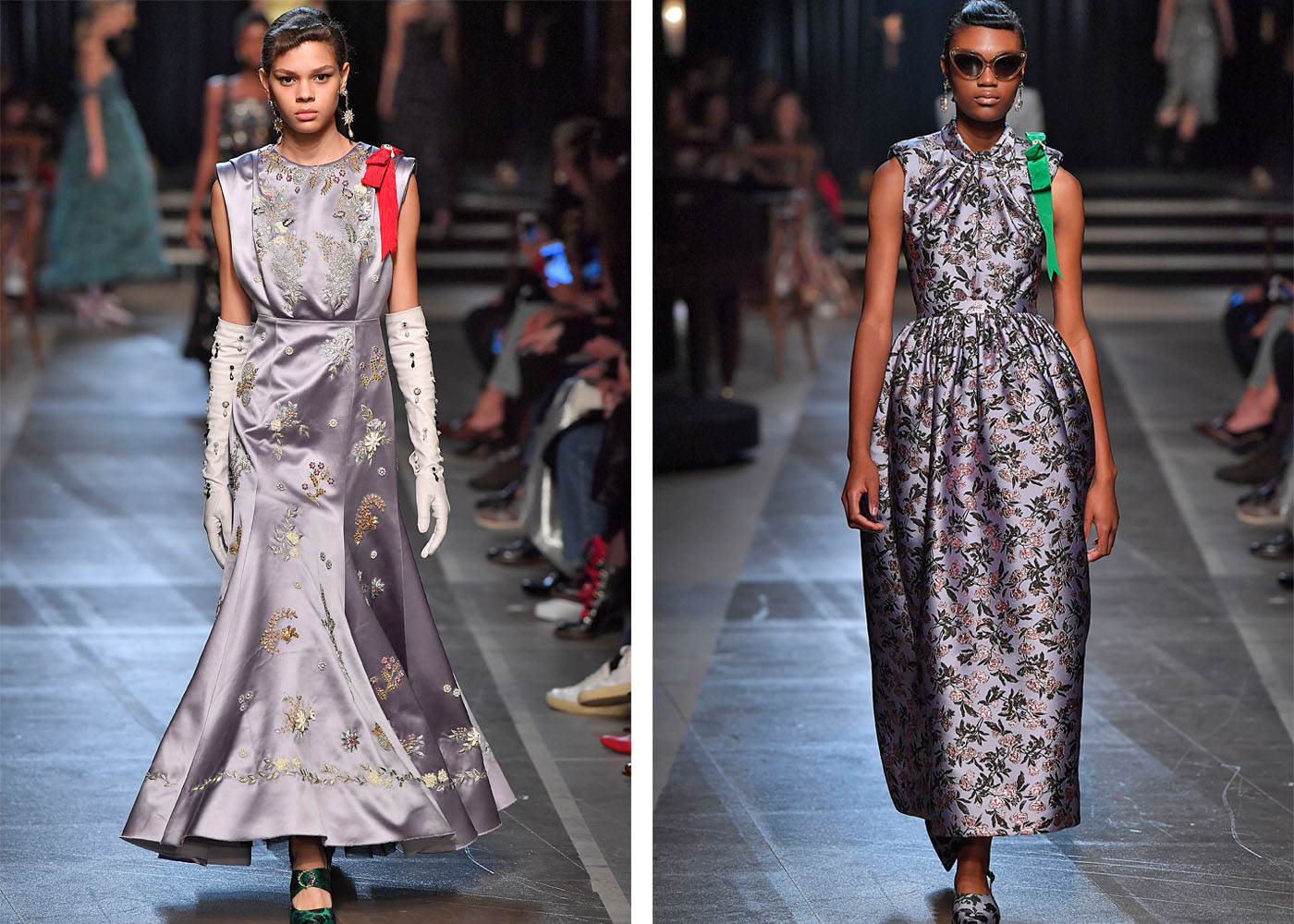Erdem: success is a restless imagination
Why women love Erdem Moralioglu's fluid, feminine designs

Erdem distinctively remembers day one at his flagship store on South Audley Street in London’s Mayfair. “I handed out the first shopping bag to our very first customer,” he says of the opening in September 2015. “They had no idea that I was the designer. I don’t know who they thought I was! But anyway,” he adds with a laugh, “it was wonderful!”
The London-based designer’s reputation for politeness and consideration precedes him. Indeed, he begins the interview by apologising for having a cold and sounding stuffy. “I’ve been lucky all winter up till now, but it’s all good!” says the 40-year-old in mild Canadian tones. It’s a crucial time: in two weeks he’ll present his AW18 show at London Fashion Week, so there’s no time to convalesce.

Not that Erdem – full name Erdem Moralıoğlu, pronounced Mor-al-ee-og-loo – is very good at taking it easy: since establishing his eponymous label in 2005, his business – for which he is the sole director – has grown exponentially year on year, with 230 global points of sale. “I’ve started fittings that take seven hours,” he says of a typical day. “Or, if I’m not in fittings, I’m with the team working on textile development. Or shoes. Or everything from buttons to sales and finance. It is a constant flow.”
The Week
Escape your echo chamber. Get the facts behind the news, plus analysis from multiple perspectives.

Sign up for The Week's Free Newsletters
From our morning news briefing to a weekly Good News Newsletter, get the best of The Week delivered directly to your inbox.
From our morning news briefing to a weekly Good News Newsletter, get the best of The Week delivered directly to your inbox.
In moments of quiet – first thing in the morning, last thing at night, and on weekends when he’s alone – Erdem can be found sketching: “I draw every day. I use a mechanical pencil and a piece of paper, nothing fancy. The first sketches are done quite quickly and instinctually, actually.” News of this rapid-fire technique comes as a surprise given that Erdem’s collections are, by his own admission, “forensic” – detailed and as rich texturally as they are researched; always inspired by a narrative that has been unpicked and reconfigured through the bewildering realms of his imagination.
The inspiration for his SS18 collection, for example, began with the Queen, but culminated in an aristocratic Cotton Club swing dance. It all started with a regal rummage: when the designer was researching the Royal Collection at Windsor Castle, he discovered Her Majesty’s love of jazz music and dance as a young woman. More remarkably, he uncovered one of two existing copies of a record composed and produced by Duke Ellington especially for the Queen after the two met at a royal reception at Leeds Civic Hall in 1958. Erdem’s collection, which imagined a young Princess Elizabeth rubbing shoulders with jazz icons such as Dorothy Dandridge, Billie Holiday and Ella Fitzgerald, married rich opulent textures and sultry retro Harlem style, all brought into the present by an ease of wear that has become the designer’s subtle signature.

It is undoubtedly this uncomplicated fluidity and femininity, structured to complement every body shape, that makes his designs so appealing to such a large female demographic, both the young and the mature. A favourite among high-profile women – from a legion of Hollywood beauties to the likes of Michelle Obama, Samantha Cameron and Kate Middleton – Erdem has carved his place in the luxury landscape with seemingly relative ease. Fundamentally, it’s all down to percipience: understanding what women want to wear when they need to make an impression. “I have always been fascinated with that moment when a woman puts something on and feels beautiful,” he says. “That’s what I work towards.”
Erdem and his twin sister Sara, a producer and documentary filmmaker, grew up on a diet of cinema and literature at their childhood home in Montreal. Their father was Turkish and their mother English, born in Birmingham. Erdem credits her with the nostalgic sense of Englishness – sometimes esoteric – underlined in his collections.
A free daily email with the biggest news stories of the day – and the best features from TheWeek.com
“As a little boy, I spent so much time watching old films in the basement,” he offers. “I was fascinated with women; how they moved and how they looked. I even remember my first-grade teacher!” It’s little wonder, then, that almost all of Erdem’s collections are dreamt up for real or imagined female protagonists. His AW17 collection – perhaps his most personal from a heritage perspective – was developed from an imagined meeting between his English and Turkish great-grandmothers. This fantasy friendship was made real thanks to a fusion of richly embroidered fabrics – turmeric gold and Damascan Rose velvets, exotically printed lace, sapphire-blue sequins – sweeping floor-length dresses and the demure and stately cut of Crombie-like coats.
In the run-up to his AW18 London show, Erdem is also working on a collection for a new production by the Royal Ballet, choreographed by Christopher Wheeldon. After his sell-out high-street collection for H&M last November, which was also his menswear debut, this new dance project – scheduled for mid-March – has opened up a whole new world to the designer, who is at his happiest when investigating new techniques and materials, weaving together the conceptual threads that make up his poetic storyboards. “Working with Christopher really is a dream come true. Dance has always been a passion of mine,” he says, citing some of his favourite childhood movies, including The Turning Point (1977) with Shirley MacLaine and Anne Bancroft, and White Nights (1985) – both of which starred acclaimed ballet star Mikhail Baryshnikov.
“In my first fitting with Lauren [Cuthbertson, his close friend and a principal dancer with the Royal Ballet], she was literally on point and her right leg just raised straight up to the ceiling. There is enough room for all the dancers to move, too. Thinking of a garment in terms of that type of movement is very different, and it’s very much something that I’m learning as I go along,” he says modestly.
Erdem met his partner, the architect Philip Joseph, 15 years ago when they were both MA students at London’s Royal College of Art. The two worked together on the design of the South Audley Street site, a temple of good taste, flooded in natural light. A minimalist U-shaped ‘chandelier’ hangs from a central staircase like a giant golden earring, illuminating the space with two glowing pearls; modernist furniture sits alongside artworks by the likes of Andy Warhol and Jean Cocteau.
Erdem began collecting art eight years ago; his latest investment, he reveals, is a portrait of Lady Loughborough by Cecil Beaton, and he has decided to keep this purchase at home in Dalston as that is where he does much of his collection drawing. It is at his Whitechapel studio, however, that you can see the full extent of his artistry: the designer is known for his use of rich fabrics and experimental textiles, which he sources from the finest fabric manufacturers in Europe. “We work with some extraordinary mills that are very committed to developing things specifically for us,” he explains. “What excites me most is the idea that you can look at old couture fabrics from the ‘40s and ‘50s and figure out ways to remake them, modernise them.”
Storytelling and narratives aside, the idea of breathing new life into traditional crafts is what makes Erdem tick. “I found an amazing studio in North London called Rare Tread, run by a girl I went to college with,” he enthuses when we hit on the subject of the capital being an enduring cradle for young creative talent. “They make the most beautiful woven fabrics.”
But London can also be an aggressive and frustrating place to live, I venture. Erdem staunchly disagrees: “I don’t think I could ever have created SS18 had I lived anywhere else. And the previous collection, about my great-grandmothers meeting, had, in a way, everything to do with what is happening here politically. I am inspired by London. It is very much my home.”
He pauses, then adds on a more introspective note: “What can happen in 10 or 15 years, the journey that we all go on, is scary in a way. But you know, it’s also amazing and exciting.” Optimism, it seems, really is the best medicine.
-
 How to financially prepare for divorce
How to financially prepare for divorceThe Explainer Facing ‘irreconcilable differences’ does not have to be financially devastating
-
 Why it’s important to shop around for a mortgage and what to look for
Why it’s important to shop around for a mortgage and what to look forThe Explainer You can save big by comparing different mortgage offers
-
 4 ways to save on rising health care costs
4 ways to save on rising health care costsThe Explainer Health care expenses are part of an overall increase in the cost of living for Americans